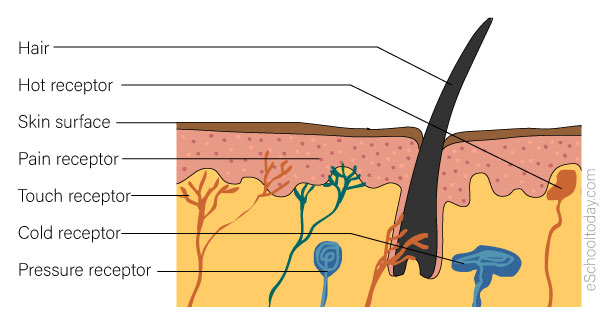- The Five Senses
The Skin and the Sense of Touch
The organ for the sense of touch is the skin. It is the largest sense organ because, unlike the other organs, it is not located at any specific place but the entire body.
Our sense of touch uses many different receptors that help us to respond to different stimuli such as pain, pressure, tension, temperature, texture, shape, weight, contours, and vibrations. It helps us move away when the brain perceives that there is a danger.
Types of sensory receptors
Receptors that respond to heat and cold are known as Thermoreceptors. Nociceptors respond to painful stimuli. Mechanoreceptors are those that respond to mechanical stimuli such as tension, pressure, or vibration. Chemoreceptors respond to chemical stimuli such as taste and smell.
The entire network of sensory receptors does not only exist in the skin. It is distributed all over the inside of the body such as muscle, bones, joints, hearts, and blood vessels. Altogether, it is known as the somatosensory system. A few places without sensory receptors are our hairs and fingernails. It is why we feel no pain when we cut or trim them. For this lesson, we shall take a look at the receptors under our skin.
Here is a diagram of the skin and what is just under its surface.

Receptors that receive very fine signals (stimuli) are located very close to the surface of the skin such as the epidermis and dermis. A little deeper, some receptors respond to stretching of the skin, vibrations, and pressure.
Like the other senses, the brain is the master organ that determines the meaning of the signals it receives from each receptor. It decides if an object is cold or hot, rough or smooth, heavy or light, wet or dry, sharp or blunt, you name them.
